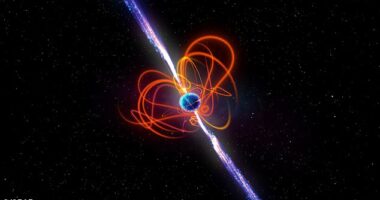NASA launched a spacecraft called Kepler in 2009 to discover what is known as exoplanets.
The mission was carried out in part by the desire to learn about other planets.
What is an exoplanet?
Scientists have been working to discover exoplanets, which are habitable planets found outside the Earth’s solar system.
The prefix, Exo, is short for extrasolar, which means beyond the sun, making exoplanets characterized by orbiting stars other than the Sun.
These exoplanets circle their own star, much like the sun, but are often difficult to see or locate because they are shadowed by the glare coming from the star they orbit.
ScientistsScientists believe most stars have exoplanets and have monitored the Nebler to find other planets that might have evidence of life.


How do scientists find exoplanets?
Scientists have discovered over 4k exoplanets, and based on their findings, they believe most stars have their own solar system.
When searching for exoplanets, scientists look for what appear to be wobbly stars, showing it doesn’t orbit perfectly around their center.
The problem with this method is that only larger planets like Jupiter or Mars can be discovered this way.
In order to find smaller exoplanets that could hold life, scientists have to use other methods such as looking at the change in brightness as an exoplanet passes in front of its star.
Most read in Tech
This method has uncovered exoplanets that fall just far enough away from and close enough to its star, allowing for the possibility of life to be created on it.
By determining how much an exoplanet shifts in brightness, scientists can approximately determine the size and how far away it is from the star.
What exoplanets have been discovered?
Scientists have discovered 4k exoplanets ranging in size from those as big as Jupiter to planets smaller than Earth.
The types of planets include:
- Gas Giants: These are large planets, like Saturn or Jupiter, that are layered with thick gas atmospheres
- Neptune-Like: These planets are large in size and covered in ice caused by a cold gas atmosphere. They are a similar size to Uranus and Neptune
- Super-Earths: These consist of a mixture of rocky and gas-shrouded exoplanets, which are larger than Earth, but smaller than Neptune.
- Terrestrial: These planets are rocky and a similar size to Earth.










